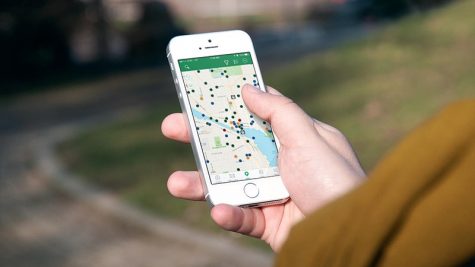Geocaching Rocks!

Just one act of kindness can go a long way! Kindness can take many forms, but you may be surprised to know that now painting rocks and writing nice sayings on them, then hiding them in the park or woods for someone to find is a growing trend. Someone may find a rock, read it, then put it back for someone else to find, or they can keep it and replace it with a rock of their own. WYKC calls the trend “part creative expression, part scavenger hunt.”
Geocaching is an outdoor hibby in which participants use a Global Positioning System (GPS) or a mobile device to find hidden items, called “caches” all over the world. The idea began in 2000, with a GPS enthusiastic named Dave Ulmer. He began what he called the “GPS Stash Hunt;” he hid the very first cache and put the GPS location on a chat site. As people found his cache, they started making their own, and the idea gained popularity–eventually leading to clubs, apps, and more.
While these caches were originally small waterproof containers containing a pencil and paper logbook, the idea evolved into hiding painted rocks and tracking their locations using social media. The trend of painting and hiding rocks took off here in Ohio in spring of 2017. The most popular, Northeast Ohio Rocks, is a Facebook group that allows members to track the origins of the rocks they find and lets those who hid them discover who found them.
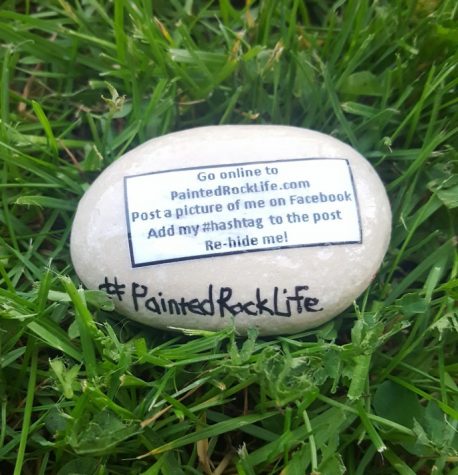
Some people are using this geocaching trend to spread words of kindness. Mrs. Laura, a Sunday school teacher at Community of the Holy Spirit Church in Willoughby, had her Sunday school students paint rocks featuring nice sayings on them and then hid them outside. She said, “I think it is a good way to make people happy. I found a rock and it made me happy, so I want others to be happy. It also makes me happy to see the children use their creativity!”
Mayfield’s Ignite Team also integrated the trend into their recent field trip. Mrs. Shaffer, one of the teachers who went on the field trip said, “Team Ignite painted rocks as part of Northeast Ohio Rocks.” Mrs. Shaffer explains, “We painted these to leave along the trail on our hope was to spread positivity in the community. We included the hash tag “teamignite” so we can track the rocks on Twitter!”
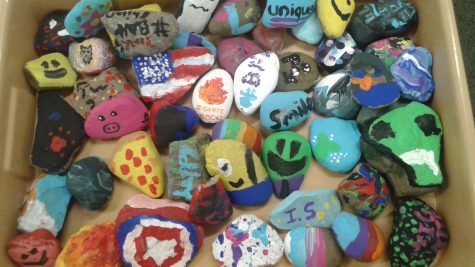
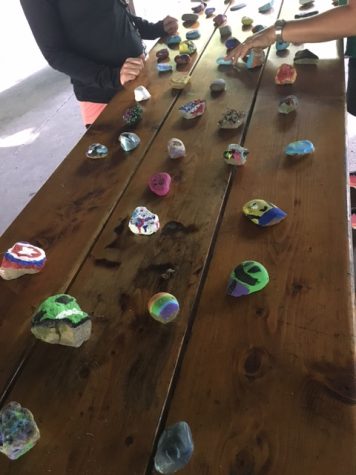
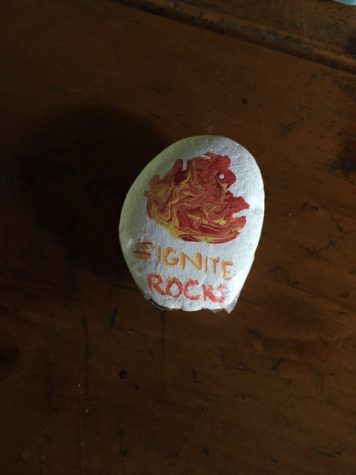
Geocaching’s not just for fun; it has many learning benefits. Jessica Leigh Rosier at St. Cloud State University said, “The results of this study indicate the importance of geocaching as a learning tool in natural areas. Geocaching can acquaint participants with the area they are exploring and participants experienced a greater understanding of natural resources and history when following the path to a geocache.”
But, Geocaching has its faults, too. Some people who participate in geocaching have trouble finding rocks because they are placed off the trail. This causes them to leave the trail and disturb the ecosystem by trampling plants. According to the Earth and Sciences Department, at the California Polytechnic State University, Gregory Shannon Bohr said, “Because the activity is largely participant-created and, there is little oversight for how geocaching is monitored and controlled, including environments like open spaces and long hiking trails, many participant-created caches are placed off-trail, and often, in some environmentally-sensitive areas.”
Despite this, geocaching is a great way to blend technology and the outdoors. It offers game-like fun while exploring nature and getting active.
